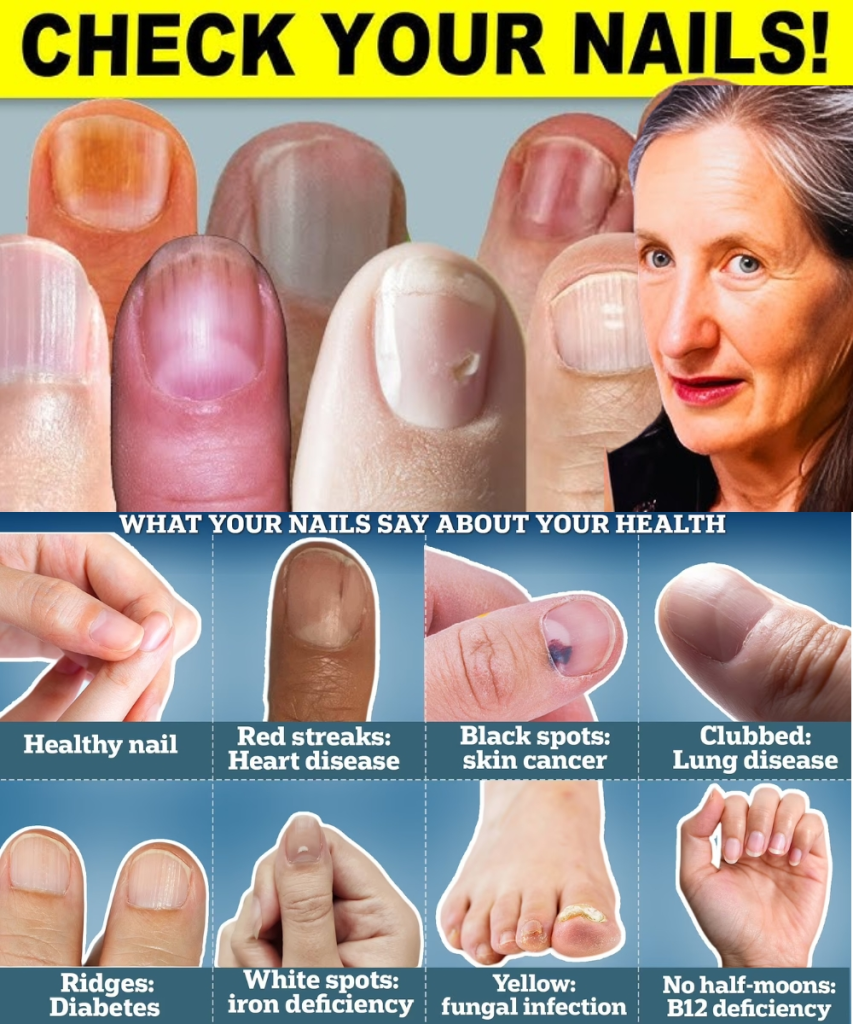
Your nails are not only a cosmetic feature—they can reveal a lot about your overall health. Changes in color, texture, or shape may indicate underlying health conditions that shouldn’t be ignored. Here are some things your nails might be telling you about your health.
1. Pale or White Nails – Anemia or Liver Issues
If your nails appear unusually pale or white, it could be a sign of anemia, which is caused by low red blood cell levels. It may also indicate liver disease, such as hepatitis or cirrhosis. Anemia reduces oxygen levels in the body, which can impact the color of your nails.
2. Yellow Nails – Fungal Infection or Lung Problems
Yellow nails are commonly associated with fungal infections. However, in some cases, yellowing can be linked to respiratory issues such as chronic bronchitis or even thyroid disease. It’s important to note that while yellow nails often signal a fungal issue, other causes like lung or thyroid conditions can also contribute.
3. Brittle, Cracked Nails – Thyroid Problems or Nutrient Deficiency
If your nails are brittle or crack easily, it could be a sign of hypothyroidism (an underactive thyroid), which affects metabolism and weakens nails. A lack of essential nutrients such as biotin, iron, or fatty acids can also contribute to brittle nails.
4. Dark Lines or Streaks – Possible Melanoma
Black or dark brown streaks on your nails should be taken seriously, as they can indicate melanoma, a serious form of skin cancer. If you notice such streaks, it’s important to seek medical attention promptly.
5. Bluish Nails – Low Oxygen Levels
Bluish nails suggest a lack of oxygen in the bloodstream, which could be related to lung diseases like COPD (chronic obstructive pulmonary disease) or heart conditions affecting circulation. This could be a sign of serious health issues that require medical evaluation.
6. Spoon-Shaped Nails – Iron Deficiency or Heart Disease
Nails that are concave, or spoon-shaped, can indicate iron deficiency anemia or heart problems. This condition, known as koilonychia, can also be associated with liver disease. It’s important to pay attention to this change, as it can be linked to serious health conditions.
7. Pitting or Dents – Psoriasis or Autoimmune Disorders
Small dents or pits in the nails are often associated with psoriasis, an autoimmune condition affecting the skin. Nail pitting can also be linked to other autoimmune diseases, such as alopecia areata or lupus. If you notice pitting, consult a healthcare provider for further evaluation.
8. White Spots – Minor Trauma or Zinc Deficiency
White spots on the nails are usually harmless and often result from minor trauma or injury. However, frequent white spots could be an indication of zinc deficiency. If they appear frequently without obvious injury, it’s a good idea to check your diet or consult with a healthcare professional.
9. Ridges on Nails – Aging or Nutritional Deficiencies
Vertical ridges on nails are common as people age. However, deep horizontal ridges, also known as Beau’s lines, can be a sign of serious conditions such as diabetes, high fever, or malnutrition. If you notice these changes, it’s important to see a doctor for further assessment.
When to See a Doctor?
While some nail changes are harmless, others could indicate serious health conditions. If you notice persistent discoloration, unusual growth patterns, or sudden changes in your nails, it’s best to consult a doctor for further evaluation. Early intervention is key to addressing underlying health issues.
Conclusion
Paying attention to the changes in your nails can offer valuable insights into your overall health. While some nail conditions are harmless and temporary, others could point to more serious underlying issues. If you notice any unusual or persistent changes in your nails, it’s essential to seek medical advice to ensure early diagnosis and treatment.

